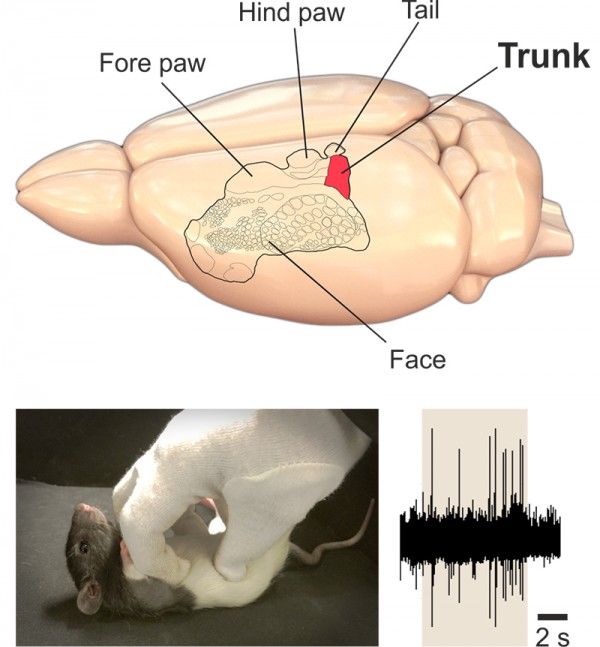By Ana Verayo, | November 12, 2016

Illustration of a rat's brain. (Ishiyama & Brecht)
In a new, remarkable study, scientists have found out that rats apparently love to get tickled and they "giggle." A team from Humboldt University of Berlin also discovered that rats jump for joy when you tickle them and even beg for your hand to give them another tickle.
Like Us on Facebook
According to neuroscientist Shimpei Ishiyama, by answering why tickling induces laughter and how its effects are dependent on mood, and which body parts respond best to tickling, this new study can provide a better understanding of how the neural system in the human brain works.
The "tickle center" of our brain is known as the somatic sensory cortex, which is a cluster that is located on the outer top center of the brain. This is also the region where touch sensations are processed.
In this new study, the team placed electrode implants in this region in the rats' brains and tickled the tiny creatures. Researchers say that they tickled them in a gentle manner on different body parts and saw different ultrasonic vocalizations. Past studies have shown that this sound is translated as high pitched rat giggles.
Researchers call this phenomenon as "Freudensprünge" or jumping for joy, confirming that tickling the rats produced vocalizations, approaches, and jumps.
Scientists have confirmed that this same region of the brain in humans and rats can evoke the same intense neural activity from tickling, in the somatosensory cortex.
However, when the rats were placed under bright lights or on top of platforms, the rats did not giggle or jump around when tickled.
Ishiyama says that this observation regarding the somatosensory cortex, which is linked to tickling responses, suggests that this region in the brain is connected to more emotions than previously thought.
This new study was published in the journal Science.
-
Use of Coronavirus Pandemic Drones Raises Privacy Concerns: Drones Spread Fear, Local Officials Say

-
Coronavirus Hampers The Delivery Of Lockheed Martin F-35 Stealth Fighters For 2020

-
Instagram Speeds Up Plans to Add Account Memorialization Feature Due to COVID-19 Deaths

-
NASA: Perseverance Plans to Bring 'Mars Rock' to Earth in 2031

-
600 Dead And 3,000 In The Hospital as Iranians Believed Drinking High-Concentrations of Alcohol Can Cure The Coronavirus

-
600 Dead And 3,000 In The Hospital as Iranians Believed Drinking High-Concentrations of Alcohol Can Cure The Coronavirus

-
COVID-19: Doctors, Nurses Use Virtual Reality to Learn New Skills in Treating Coronavirus Patients







